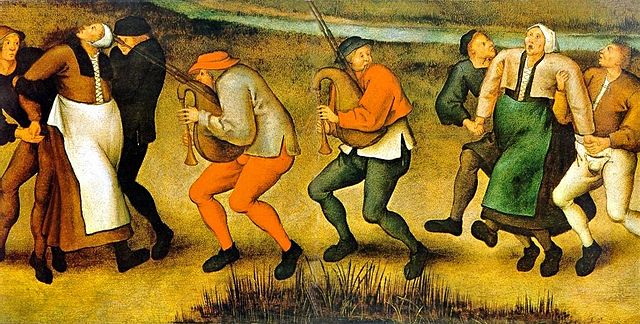The dancing plague of 1518, or dance epidemic of 1518, was a case of dancing mania that occurred in Strasbourg, Alsace, in the Holy Roman Empire from July 1518 to September 1518. Somewhere between 50 and 400 people took to dancing for weeks. There are many theories behind the phenomenon, the most popular being stress-induced mass hysteria, suggested by John Waller. Other theories include ergot and religious explanations. There is controversy concerning the number of deaths.
Engraving by Hendrik Hondius portraying three people affected by the plague. Work based on original drawing by Pieter Brueghel.
Dancing mania was a social phenomenon that may have had biological causes, which occurred primarily in mainland Europe between the 14th and 17th centuries. It involved groups of people dancing erratically, sometimes thousands at a time. The mania affected adults and children who danced until they collapsed from exhaustion and injuries, and sometimes died. One of the first major outbreaks was in Aachen, in the Holy Roman Empire, in 1374, and it quickly spread throughout Europe; one particularly notable outbreak occurred in Strasbourg in 1518 in Alsace, also in the Holy Roman Empire.
Dancing mania on a pilgrimage to the church at Sint-Jans-Molenbeek, a 1642 engraving by Hendrick Hondius after a 1564 drawing by Pieter Brueghel the Elder
Music was typically played during outbreaks of dancing mania, as it was thought to remedy the problem. A painting by Pieter Brueghel the Younger, after drawings by his father


